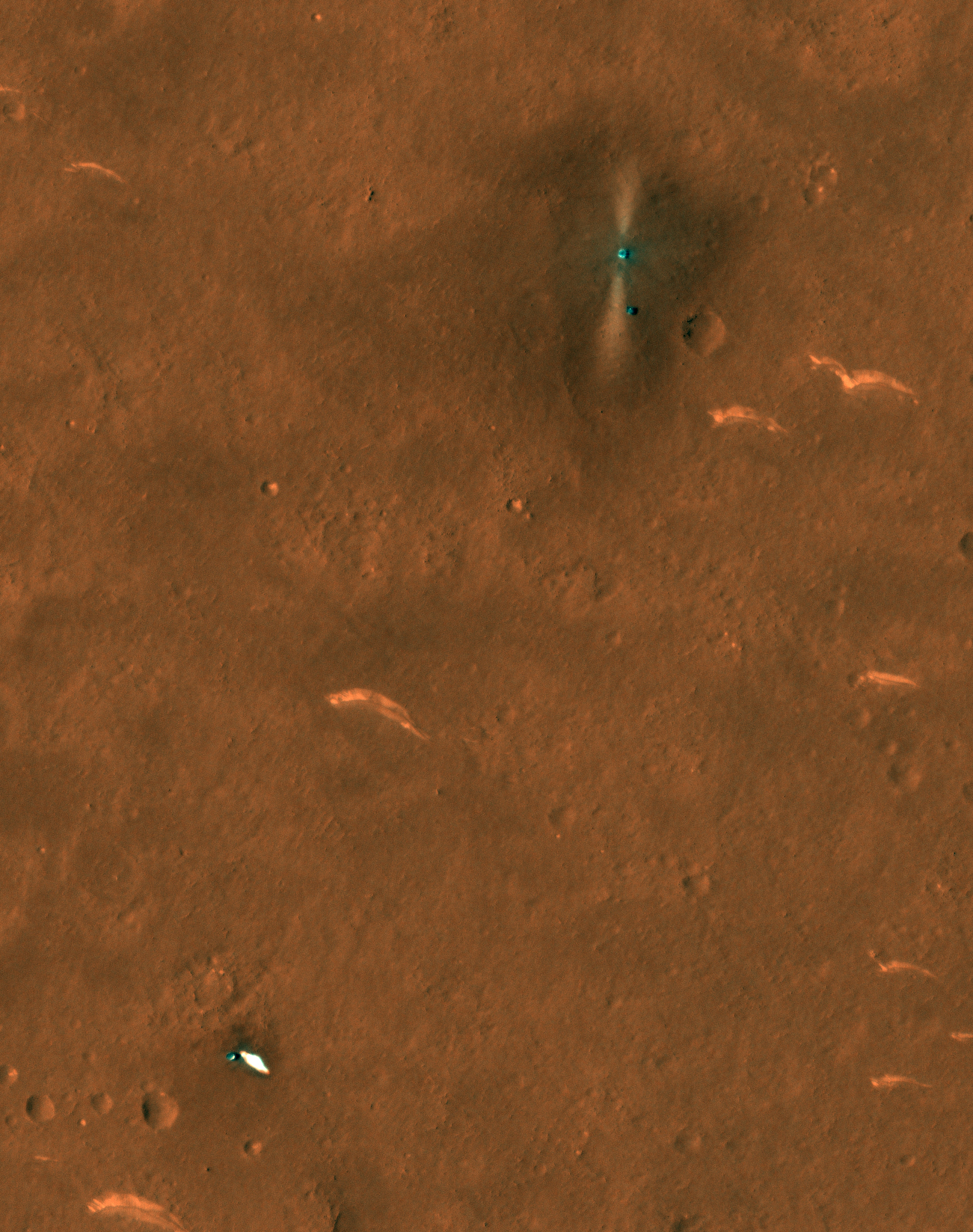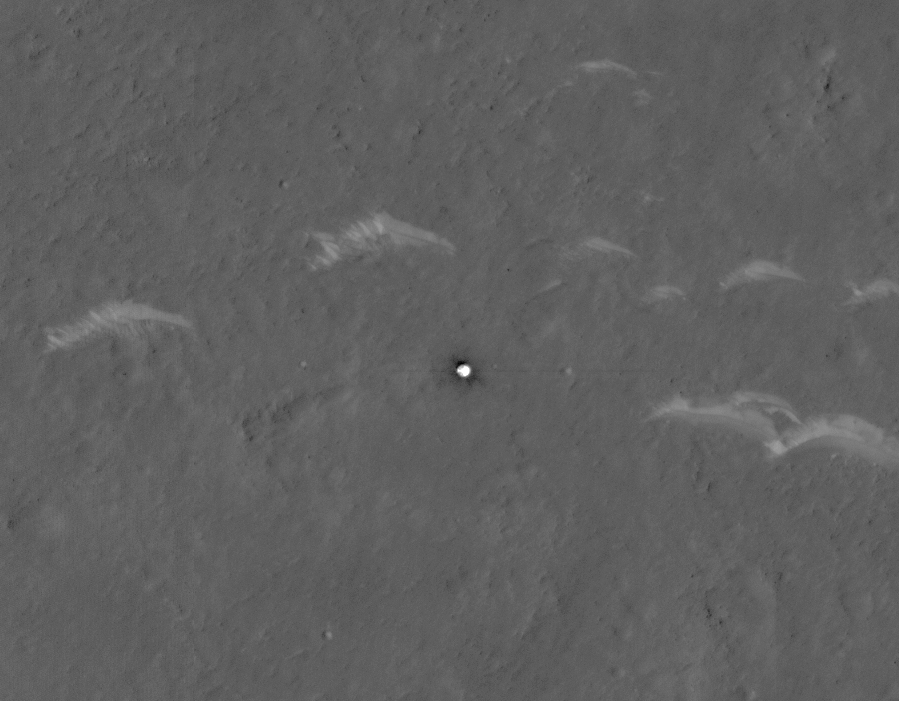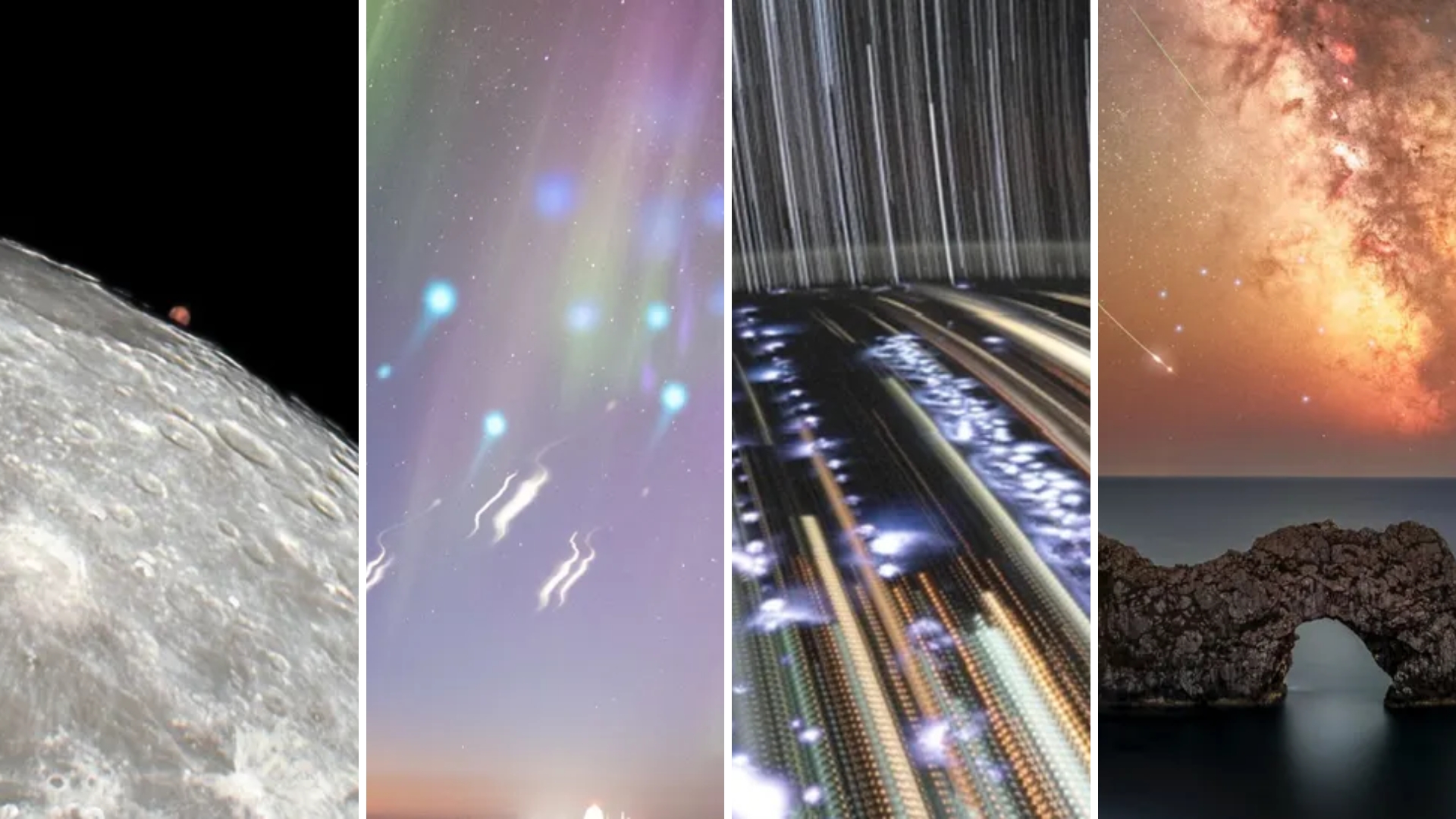China's Mars rover Zhurong spotted from space by NASA orbiter (photos)
A sharp-eyed NASA spacecraft has given us a bird's-eye view of China's first Mars rover.
The HiRISE camera aboard NASA's Mars Reconnaissance Orbiter (MRO) snapped a shot of the Chinese rover, called Zhurong, on June 6, about three weeks after the wheeled robot touched down with its stationary lander on the vast Red Planet plain Utopia Planitia.
"Clearly visible are what we interpret as the lander surrounded by a blast pattern, and the rover itself a bit to the south after it descended from the lander," HiRISE team members wrote in a description of the photo, which was released today (June 10).
"This image shows the surrounding terrain to be very typical of southern Utopia Planitia, with a smooth and mostly boulder-free region," they added. "The bright curving features are aeolian (windblown) landforms."
Related: China's Tianwen-1 Mars mission in photos
The HiRISE imagery also shows the hardware that helped Zhurong and its lander make it safely to the Martian surface. The mission's heat shield, back shell and parachute can all be seen, scattered some distance from the rover-lander duo.
Zhurong is part of the Tianwen-1 mission, which launched toward the Red Planet in July 2020. Tianwen-1 also includes an orbiter, which is studying Mars from above and serving as a relay link between Zhurong and controllers on Earth.
Breaking space news, the latest updates on rocket launches, skywatching events and more!
Zhurong will study the geology of its landing zone and hunt for water ice, among other tasks, during a surface mission designed to last at least three months. The Tianwen-1 orbiter, meanwhile, will conduct mineralogical and other investigations for at least one Mars year, which is 687 Earth days.
The new image is far from the first HiRISE (short for "High Resolution Imaging Science Experiment") has captured robots on the Martian surface. The camera, which can resolve features as small as a coffee table on the red dirt below, has also snapped photos of NASA's Spirit, Opportunity, Curiosity and Perseverance rovers, as well as the agency's Phoenix and InSight landers.
As that lengthy list implies, MRO has been in action a long time. The spacecraft has been circling Mars for more than 15 years now, studying the planet's geology and climate, scouting out future landing sites and relaying communications from surface craft back to Earth, among other tasks.
Mike Wall is the author of "Out There" (Grand Central Publishing, 2018; illustrated by Karl Tate), a book about the search for alien life. Follow him on Twitter @michaeldwall. Follow us on Twitter @Spacedotcom or Facebook.

Michael Wall is a Senior Space Writer with Space.com and joined the team in 2010. He primarily covers exoplanets, spaceflight and military space, but has been known to dabble in the space art beat. His book about the search for alien life, "Out There," was published on Nov. 13, 2018. Before becoming a science writer, Michael worked as a herpetologist and wildlife biologist. He has a Ph.D. in evolutionary biology from the University of Sydney, Australia, a bachelor's degree from the University of Arizona, and a graduate certificate in science writing from the University of California, Santa Cruz. To find out what his latest project is, you can follow Michael on Twitter.



